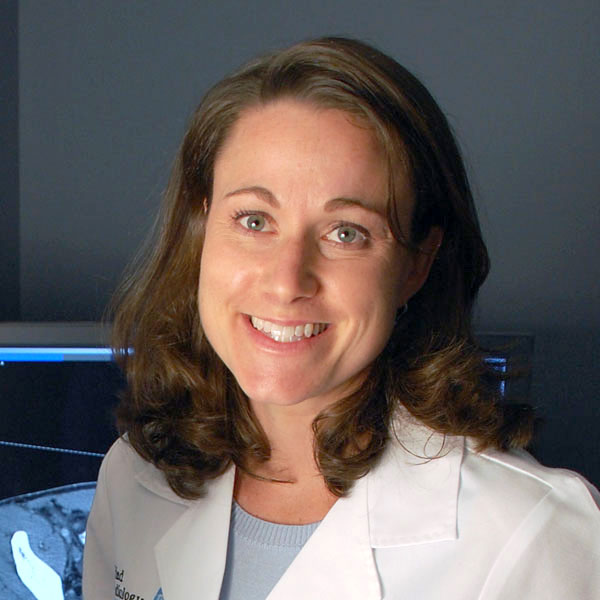Ultrasound-Guided Breast Biopsy
Overview
An ultrasound-guided breast biopsy uses sound waves to help locate a lump or abnormality and remove a tissue sample for examination under a microscope. It is less invasive than surgical biopsy, leaves little to no scarring and does not involve exposure to ionizing radiation.
Ultrasound imaging is based on the same principles involved in the sonar used by bats, ships and fishermen. When a sound wave strikes an object, it bounces back, or echoes. By measuring these echo waves, it is possible to determine how far away the object is as well as the object’s size, shape and consistency (whether the object is solid or filled with fluid).
In medicine, ultrasound is used to detect changes in appearance, size or contour of organs, tissues, and vessels or to detect abnormal masses, such as tumors.
Common Uses of the Procedure
An ultrasound-guided breast biopsy can be performed when a breast ultrasound shows an abnormality such as:
- A suspicious solid mass
- A distortion in the structure of the breast tissue
- An area of abnormal tissue change
Sometimes, your doctor may recommend this type of biopsy procedures even for a mass in the breast that can be felt.
Women’s Imaging Locations
Imaging Centers & Clinics
What to Expect
In an ultrasound-guided breast biopsy, you will be on the examination table either lying face up or slightly on your side. The breast will be numbed with a local anesthetic injection. The radiologist will then locate the lesion by pressing the transducer — hand-held device that sends and receives ultrasound signals — to the breast. A very small nick will be made in the skin at the site where the biopsy needle needs to be inserted and then a tissue sample will be taken.
Tissue samples can be removed in a few different ways, which include:
- Fine needle aspiration, where a fine gauge needle and a syringe withdraw fluid or clusters of cells for analysis.
- Core needle biopsy, where a large hollow needle is inserted through the skin to the site of an abnormal growth to collect and remove a sample of cells for analysis. This procedure uses an automated needle, which obtains one sample of tissue at a time and is re-inserted several times.
- Vacuum-assisted device (VAD), where a vacuum-powered instrument is inserted through the skin to the site of an abnormal growth to collect and remove a sample of cells for analysis. Using vacuum pressure, the abnormal cells and tissue are removed without having to withdraw the probe after each sampling as in core needle biopsy.
Triad Radiology offers Womens Imaging at a variety of locations, including hospitals, imaging centers, and clinics. Contact us if you want to learn more or schedule an appointment.



